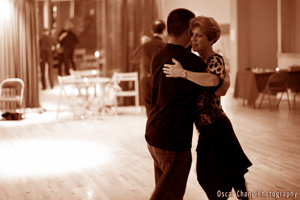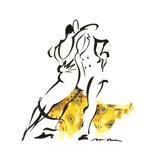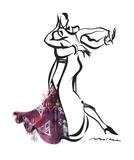Self-Discovery through Tango
Tango is a process of self-discovery
TOUCH
Dancing Tango is sympathetic - the dancers physically experience (feel) one another, in motion, giving and receiving information through touch, proximity and electromagnetism
OBSERVE
Watching Tango is empathetic – watching the dancers stirs up emotions sufficient to draw tears or hold one’s breath
RECIPROCAL EXPERIENCE
Tango is a three dimensional, active art form. It is expression – expression can be experienced through both sympathy and empathy
CLARITY – ABSENCE OF NOISE
Clarity is what separates Argentine Tango from casual partner dances. Communication is subtle, precise, gentle and yet strong. Clarity – the absence of interference – is what makes a dancer good. The combination of subtle, clear and precise communication makes the dance sensual through the lightness of touch, but requires that the dancers acquire extraordinary skills of self-discipline in balance and movement.
ROLES
Leader and Follower have very different roles although both give and receive information through the subtle clarity and precision of their movements but the Leader guides the dance through intention and invitation whereas the Follower must submit to the dance, allowing her movements to accept and complete the energy from the leader
MISCONCEPTION
In tango our objective is not to acquire a number of patterns, steps in specific sequence, to memorize and reproduce on command
OBJECTIVE
In tango our objective is to practice and learn the skills, the art of physical self-control, to share in movement whilst in the arms of another. The harmony obtained through focus and skill of both dancers allows for improvisation, expression in three dimensions, in real time – to infinity
EUPHORIA
The ability to focus on so many elements, internal and personal as well as the external aspects of the information between the partners, simultaneously, actually delivers us and separates us from daily life. We leave behind almost everything that consumes and surrounds us, including our incessant stream of conciousness (thoughts), to truly experience the present, the connection, the floor and the music. The floor is the canvas and the music the pallette of colors we use to create our expression



 We can establish the elements with ease, set the stage as it were, but achieving the essence of Argentine Tango is not so simple. An occasional successful ‘connection’ encounter cannot be accurately described because no words suffice to adequately interpret the experience.
We can establish the elements with ease, set the stage as it were, but achieving the essence of Argentine Tango is not so simple. An occasional successful ‘connection’ encounter cannot be accurately described because no words suffice to adequately interpret the experience. Many well meaning people will argue that Argentine Tango can be taught through the written word: books, others through visual media: video. Maybe a combination is their ideal solution. I differ from these opinions.
Many well meaning people will argue that Argentine Tango can be taught through the written word: books, others through visual media: video. Maybe a combination is their ideal solution. I differ from these opinions. May I have this dance? It’s been quite a while
May I have this dance? It’s been quite a while
 Once we connect the tango will flow
Once we connect the tango will flow
 Sorry, but as you were squeezing my hand,
Sorry, but as you were squeezing my hand,
 The music’s inspiring, so I’ll improvise…
The music’s inspiring, so I’ll improvise…